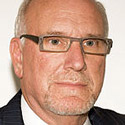09:00 AM
The Dreaded IT Budget Cut: Myth, Reality, Transparency
Executive and business management rarely have the transparency they need in terms of the technology economics of the IT function. As a result it is easier to specify “cuts” than to make them happen. Therefore there is an urgent need for IT management to provide more exacting and insightful views into the cost structure of IT – what is controllable in the short term and what is not. In short, there are many misconceptions surrounding realities of IT budget cuts.
The Scenario
A financial services company is focusing on managing expenses downward in the face of flat or declining revenue and increasing regulation. A Board and Operating Committee that has reviewed company expenses, has identified IT as being among the top five expenses in the company. Leaders mandate that IT should reduce infrastructure costs, currently at $2.5 billion, by $250 million (10%). Sound familiar?
The Myth
Taking out 10% of IT cost is easy.
The Reality (and “Harsher and Harshest Realities”)
For this company, which is modeled after most financial firms, 63% of infrastructure cost is “non-controllable.” This means that $1.56 billion is locked into depreciation and contracts that cannot be impacted within a one-year timeframe. That leaves 37% of cost ($935 million) that has the potential to be short-term “controllable.” However, the requested $250 million reduction represents 27% of the $935 million -- suddenly the 10% reduction in expense is actually 27%.
[For more on the challenges facing CIOs and pressures on IT budgets, read: Pressures on Bank IT in the Age of Cloud.]
The harsher reality is that of the $935 million of controllable expenses, 85% ($792 million) is usually staff related, and the desired reduction of $250 million is essentially 32% of the staff -- which just cannot be done without incurring a high level of operational risk.
The most extreme and harshest reality is that a closer analysis reveals a “safe” staff reduction level is 10%, which is equivalent to $79.2 million. Furthermore, additional options in other expense categories total only $10.17 million in cuts for a total potential of $89.4 million, assuming a start on such reductions at the absolute start of the year.
What is most evident, net-net from the $250 million original request, is there is a gap of $160.6 million in likely unattainable expense reductions.
The Resolution
IT leadership needs to provide a new form of transparency into the dynamics of the IT cost structure.
While most organizations have focused on chargebacks with unit costs and consumption, the more pressing need has to do with creating a view of the elasticity, control points, and “runway” for the adjustment and tuning of IT costs.
A starting point is the construction of a table or documentation that shows the controllable and non-controllable costs. The value of building one is not the table itself. The value comes from the insights and learnings from the process of creating the table. Doing so forces the issue of the realities of controllable costs and the long tail of financial obligations that have built up over time.
With technology intensity continuing to rise and with technology increasingly itself being the product and channel in financial services, an understanding of a firm’s true technology economics and the levers for its management is equally critical for business management, IT management, and even shareholders.


















